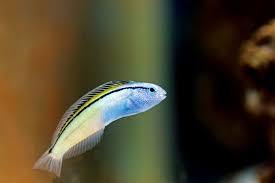
Wildflowers have long been celebrated for their beauty and ecological benefits, but their role in creating inclusive and accessible living spaces for people with disabilities and the elderly is often overlooked. In this article, we explore how wildflowers can be used to design environments that are not only aesthetically pleasing but also supportive and welcoming for individuals with diverse needs.
**1. Sensory Gardens:**
Wildflower gardens can be designed to engage multiple senses, providing sensory stimulation and therapeutic benefits for individuals with disabilities and the elderly. Incorporating fragrant flowers, tactile textures, and vibrant colors can create a sensory-rich environment that promotes relaxation, sensory integration, and emotional well-being. Sensory gardens offer opportunities for sensory exploration and enjoyment, enhancing the quality of life for individuals with sensory sensitivities or cognitive impairments.
**2. Accessible Pathways and Seating Areas:**
When planning wildflower landscapes, it is essential to consider accessibility for individuals with mobility impairments or mobility aids such as wheelchairs or walkers. Designing wide, level pathways with smooth surfaces allows for easy navigation and ensures inclusivity for all users. Incorporating seating areas along pathways provides resting spots for the elderly and individuals with mobility limitations, allowing them to enjoy the beauty of the wildflowers at their own pace.
**3. Universal Design Principles:**
Applying universal design principles to wildflower garden layouts ensures that outdoor spaces are accessible and usable by people of all ages and abilities. Features such as raised planters, adjustable-height garden beds, and wheelchair-accessible viewing platforms accommodate diverse needs and promote social inclusion. By integrating universal design elements, wildflower gardens become welcoming environments where everyone can participate in gardening activities and enjoy nature together.
**4. Therapeutic Horticulture Programs:**
Wildflower gardens offer opportunities for therapeutic horticulture programs tailored to the unique needs of individuals with disabilities and the elderly. Engaging in gardening activities, such as planting, watering, and harvesting wildflowers, provides therapeutic benefits, including improved physical fitness, motor skills, and mental well-being. Therapeutic horticulture programs also foster social connections and community engagement, reducing feelings of isolation and loneliness.
**5. Wildlife Habitat Enhancement:**
Wildflower gardens attract a variety of wildlife, including birds, butterflies, and pollinators, enhancing biodiversity and creating opportunities for wildlife observation and interaction. For individuals with disabilities or the elderly, watching birds and butterflies in the garden can provide a sense of connection to nature and opportunities for learning and sensory enjoyment. Designing wildflower habitats with accessible bird feeders, butterfly houses, and wildlife viewing areas promotes inclusive nature experiences for all.
**6. Educational Opportunities:**
Wildflower gardens serve as outdoor classrooms for environmental education and nature-based learning programs for individuals of all ages and abilities. Incorporating interpretive signage, tactile plant labels, and interactive exhibits encourages learning about native plants, wildlife habitats, and ecological conservation. Educational programs focused on wildflowers promote environmental awareness, instill a sense of stewardship, and inspire lifelong learning for individuals with disabilities and the elderly.
**7. Community Engagement and Volunteerism:**
Wildflower gardens provide opportunities for community engagement and volunteerism, bringing people together to participate in garden maintenance, habitat restoration, and conservation activities. Community-led initiatives to plant and maintain wildflower gardens foster social connections, build relationships across generations, and strengthen community bonds. By involving individuals with disabilities and the elderly in community gardening projects, we promote inclusivity, empower participation, and create shared spaces that benefit everyone.
In conclusion, wildflowers offer endless possibilities for creating inclusive, accessible, and age-friendly living spaces that celebrate diversity and promote well-being for individuals with disabilities and the elderly. By embracing the principles of universal design, therapeutic horticulture, and community engagement, we can harness the power of wildflowers to nurture connections, foster resilience, and cultivate vibrant, supportive communities for generations to come.










